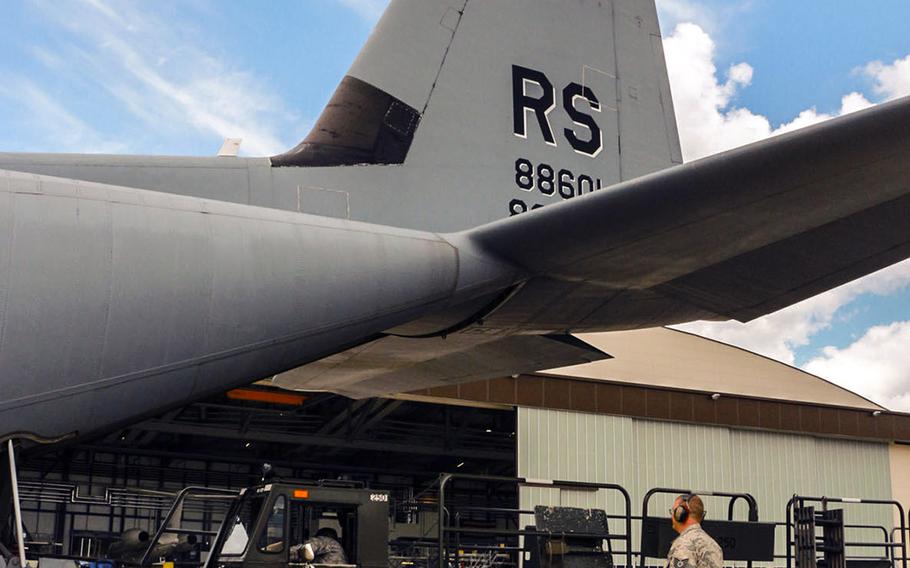Europe
Stowaway in Air Force C-130 at Ramstein likely suffocated
Stars and Stripes July 30, 2014

A C-130 Hercules aircraft is unloaded on July 15, 2014 at Ramstein Air Base, Germany. (Madelyn McCullough/USAF file photo)
A teenage boy found dead inside a hidden compartment of an Air Force plane after its return to Ramstein Air Base in Germany from a mission across northern Africa likely suffocated because of a lack of oxygen at high altitude, according to an autopsy performed Wednesday.
German investigators said the unidentified youth, believed to be from Africa, most likely boarded the plane in Bamako, the capital of Mali, one of several stops made by the Ramstein-based C-130J Super Hercules during an eight-day mission. Prosecutor Eberhard Bayer could not say what led investigators to that conclusion but said his clothing could have been an indicator.
Their findings further the belief that he climbed into the plane as a stowaway. The boy’s body was found in a compartment above the rear wheel well, the Air Force said.
Medical examiners in nearby Homburg, Germany, determined there was “high probability” that the youth suffocated because of the lack of oxygen at high altitude.
The C-130J, commonly used to airlift cargo and troops long distances, can fly close to 30,000 feet in the air, an altitude at which oxygen is thin and temperatures well below freezing.
Military investigators are now trying to determine where and how the teenager got on board. The plane also made stops in Senegal, Chad and the Navy air base at Sigonella, Sicily, after leaving Ramstein on July 19, said Maj. Tony Wickman, a spokesman for the 86th Airlift Wing. Wickman wasn’t sure of the order of each stop. Pentagon spokesman Col. Steve Warren said the plane also stopped in Tunisia.
Routine pre- and post-flight checks between each stop revealed nothing unusual, Wickman said, although such checks focus only on the air worthiness of an aircraft. The plane functioned normally on each leg of its mission, he said, suggesting nothing was out of the ordinary.
The body was discovered during a routine post-mission maintenance inspection, Wickman said. The crew chief first noticed something unusual as he peered into the space above the landing gear. He spotted the boy’s clothing as he moved closer. The Wing then called emergency responders, who stood by as the crew removed an exterior panel of the plane to gain access to the confined space.
“The only way you could find this person is if you crawled up the landing gear itself,” Wickman said. “That would only be done during a maintenance inspection.”
A Pentagon spokesman said Tuesday that airfields in the region where the plane was operating often lack rigorous security measures.
“Security is going to be looked at here, obviously it will be,” Rear Adm. John Kirby said Tuesday at a Pentagon briefing. “But we shouldn’t expect that the security environment in every location that these aircraft operate is going to be at the same standard” as that at U.S. military bases.
The body tested negative for communicable diseases, Kirby told reporters. An outbreak of the often deadly Ebola virus has spread across three west African countries — Liberia, Sierra Leone and Guinea, which borders Mali.
Military officials said the plane was tasked to U.S. Africa Command for the mission, but they haven’t elaborated on its operation in each country. The plane remains at Ramstein, Wickman said.
The teenager’s death comes three months after a California teenager survived stowing away on a Boeing 767 flight to Maui.
Stars and Stripes reporter Chris Carroll contributed to this report.
beardsley.steven@stripes.com kloeckner.marcus@stripes.com Twitter: @sjbeardsley